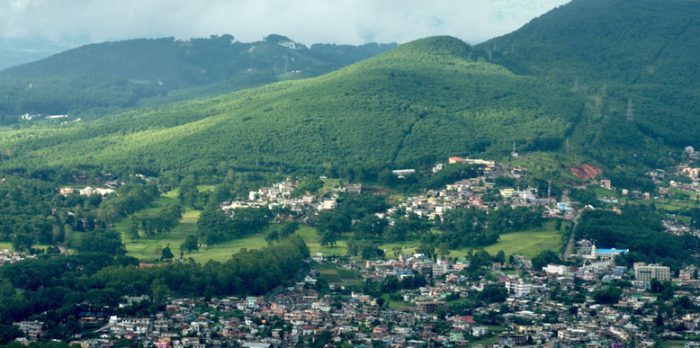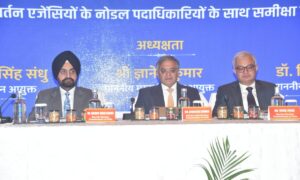
Picture Courtesy : Tour My India-
After seventy years of independence it is time for the North East to take stock of developments since 1947 and even before from 1826 when the British East India Company acquired the Ahom kingdom and made it a part of Bengal Presidency. And, after consolidation of its strategic base in the Assam valley and and creation of the Chief Commissioner’s Province in 1874 embarked on a ” forward policy” that led to annexation of the Hill Areas inhabited by the tribes over which no government in its neighbourhood- Tibetan or the Ava kingdom of Burma had any control.This process- mainly through ‘ punitive expeditions’ and pacification of Tribes and recognition under some kind of an accord of the traditional powers of the tribal chiefs to administer justice, customary land, forests and water rights was completed by 1891- 92 in Naga Hills and Mizo Hills while it continued well into the 20th century in the ” Frontier Tracts” bordering Tibet and Myanmar.
In line with the British policy of keeping Administrative overhead low, the Hill Areas , though Incorporated in Assam were ” thinly” administered as ” Scheduled districts” first and placed under the Direct charge of the Governor. And, later to name sure that the grant of Provincial autonomy under the Government of India Act 1935, didn’t change this isolation of the tribes, and the elected Legislature do not exercise powers to make laws that would apply to the Tribal areas the Hill Areas were notified as Excluded and Partially Excluded Areas and continued to be under the direct charge of the Governor. This meant that the Hill Tribes were ” excluded” from the political reforms process designed to associate the other groups in the plains of Assam with governance under the scheme of the Provincial autonomy. This arrangement continued till 1950 when the Constitution was made and introduced. The British intervention in the North East produced consequences the impact of which dictates even now the contours of politics and economy and hence worth a recall.
First, the Partition vastly enhanced the strategic importance of the Hill Areas and all scheduled Tribes of the North East because though they constitute only about 25 ℅ of the total population of the North East region they dominate roughly 70% of the total geographical area of 262179 sq km and practically the entire stretch of India’s borders with Bhutan, Tibet, Myanmar and Bangladesh except small segments of Assam and Tripura sectors of border with Bangladesh.
This geo strategic position has accorded the Hill Tribes and the states they dominate like the Arunachal, Meghalaya, Mizoram and Nagaland and the local councils in Manipur or the Sixth Schedule Areas of Assam – Karbi Anglong, Dima Hasao and tribal areas of Tripura an enormous strategic importance for national security which is not enjoyed by the more numerous central Indian Tribes occupying larger and resource rich areas in states under the 5th schedule of the Constitution.Second , the ” extractive” colonial economy that was put in place to promote labor intensive Tea plantation, jute and exploitation of minerals, Oil, timber and other forest products entailed migration of labor as well as skilled workforce from outside Assam as it was nearly depopulated during two decades of Burmese occupation to meet the needs of the colonial administration and the economy.
Though it created an unstable socio political equilibrium, it was soon upset after Independence and the establishment of a new such equilibrium is the unfinished task of nation building in North East states especially in Assam and Tripura. The ongoing update exercise of the National Register of citizenship in Assam and the demands for introduction of the Inner Line Regulation – Permit system in Manipur and Meghalaya may be seen as outcomes of this historical baggage. Third, since the hill areas were organized into districts purely on logistics basis, it led to hill people being scattered like the Nagas, Mizos and even the Manipuris in the border areas of Burma and Northeast and the consequent uneven development and unrest. Thus a Naga self administered Area and a Chin Hills Area exist in Myanmar to day adjacent to North East region and affected by insurgency even though the Mizos who are called Chins in Myanmar have been progressing well in India.
In a way the Second world war never ended in the Myanmarese Border lands with India as ethnic insurgencies continue resulting in virtual absence of the Myanmar state authorities in these sectors that enabled North East insurgents to use these Myanmarese lands as sanctuaries. Fourth, the Partition turned North East into an artificially landlocked Region ; and the Regional economy stagnated due to slow growth of compensatory infrastructure and lost its competitiveness.
Looking at the current situation, an observer not well aware of this background might not see any real change given the fact that the Region looks like a huge ” garrison state” rather than a ” developmental State” that Kishore Mahbubani articulated in his fascinating work ” Can Singapore survive?”as a state oriented to Science And Technology and innovation led growth founded on all round human development as its main objective. On the contrary a good part of the North East has been affected for long by what may be called ” phoney insurgency ” which merely raised the cost of every economic activity and made the economy uncompetitive.
No doubt that there has been a reasonable 6% plus growth in the North East from the Tenth Plan; but to sustain it in the new economic environment created by the introduction of the GST,, scrapping of the five year plan and hence the distinction between the Plan and non Plan sides of the budget, withdrawal of the Special category status for the North East region designed to create a ” state border les” National economy calls for an integrated Regional Development strategy. In fact in the North East where the states other than Assam are too small to have economies state centric development efforts makes little sense in the ” border les” national economy for several reasons.
First, the generous award of the 14th Finance Commission to the North East which is unlikely to be changed by the 15th finance commission, the implementation of the GST and the Low Tax base and potential of the North East suggest that the annual state budget exercise has largely lost its relevance both as a revenue generation exercise and as providers of incentives for attracting Investment because GST leaves little scope for the same. Indeed other factors like physical infrastructure, Telecom connectivity, power availability, efficient export processing facilities, banking network contribute more to the ease of doing business rather than tax concessions which being really subsidies tend to perpetuate inefficiencies. And industries dependent on such sops tend to be uncompetitive.
In the context of the North East region’s participation in the Act East policy as highlighted by the Prime Minister , it may be useful to draw lessons from the ASEAN of how member countries aligned their economic policies to common standards and developed through an integrated Regional Development. Following this approach it’s time to prepare a Regional Development strategy for the extended North East encompassing North Bengal and Bhutan to be able to enter the demanding ASEAN market. The steps to this direction may be as follows:
Broadening of the mandate of the NEC as a Regional planning body by amendment to the NEC Act to include North Bengal which seems realistic as Sikkim is already a member of the North East Council and West Bengal is represented in the Brahmaputra Board.
To make the North Eastern Council a platform for preparing a Regional Development Initiative to align the states tax, non tax and institutional financing arrangements and infrastructure development to the common objects of shared development.
To develop a Regional infrastructure development program to bridge the critical gaps in surface and Telecom connectivity with special emphasis on building as many trading Corridors as possible with Tibet, Myanmar, Nepal and Bangladesh. Presently these trading points are inadequate in the Mizoram- Myanmar and Bangladesh-Tripura sectors which must be strengthened to deal with increased trade once the Kaladan multi modal transport project gets operational in 2019.
An integrated science and technology and skill development strategy to promote entrepreneurial capacities within the local communities both in manufacturing and service sectors to meet the demanding standards of the ASEAN and also Nepal and Bangladesh. Further, to enable the University system of the North East to serve as ” knowledge partners of the industry a regional industry- Academia coordination mechanism must be put in place to enable the Research and Development system to function not only as Technology problem solver but also incubator of new technologies. The R and D role to meet the challenges of climate change and environment protection and River research will also be crucial in building policies and projects in the wider area of ecological security.
” The hard reality is that except Myanmar, Cambodia and Laos , the other member nations are fairly advanced and Brunei is in the league of Oil rich countries while as per the 2016 estimate of the world bank Singapore is a developed state with a percapita GDP of USD 52960 While Malaysia and Thailand having USD 9502 and USD 5905 per capita GDP are miles ahead of the North East; and Malaysia has been trying to overcome what is called the ” Middle income trap” by aiming at the USD 20,000 per capita GDP – the norm for the “developed” countries fixed by the world bank. Vietnam and Phillipines are also on a steady growth path which means getting more ” Technology intensive” because in today’s globalised economy it is Technology that adds maximum value to any manufacturing and service sector activity. Hence the critical role of the Science Technology and innovation capacity to enable the North East states to take part in the Act East policy in a way that could take the Region to a dynamic growth path. The Business Summits will really produce results when backed by a competent Science And Technology system. The time for action is now for the North East states and the North Eastern Council.
( The writer is a retired IAS officer of the Assam – Meghalaya cadre and has served as Scientific Consultant in the office of the Principal Scientific Advisor to the Government of India)


















